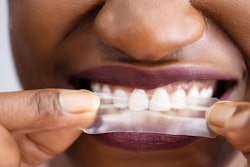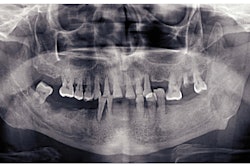
Deep margin elevation (DME) may effectively address various clinical challenges associated with subgingival margins before restorations, but it can't be used on every patient, according to a review article published on May 12 in the Journal of Dentistry.
When patients are motivated and have good oral hygiene, when rubber dam isolation is in place, the connective tissue space is not invaded, and a strict restorative protocol is followed, DME may be used, according to the review.
"DME has a future for the general dental practitioner (GDP) as many clinical scenarios involve restoring a subgingival margin," wrote the authors, led by Dr. Anna Taylor, of the Treatment Centre in the U.K.
DME offers an alternative to subgingival amalgam, avoiding the need for invasive crown lengthening or extraction.
This scoping review investigated the evidence on DME with a specific focus on its relevance for GDPs when restoring subgingival margins. Of this review, 69 studies were included.
A decision-making algorithm for clinicians recommended DME when caries invade the gingival sulcus and suggests considering this technique as an alternative to surgical crown lengthening when caries reach the junctional epithelium. Maintaining a minimum of 3 mm of space between restorative margins and alveolar bone to prevent gingival inflammation, clinical attachment loss, and bone loss were the consensus, they wrote.
Furthermore, DME demonstrated periodontal health status comparable to crown lengthening, with a notable decrease in bleeding on probing in most studies. One study reported a higher incidence of bleeding on probing. Regarding pocket depth, among six studies, one reported a significant decrease in probing depth, while another found no difference among the three DME approaches.
However, DME procedure requires precision, and more clinical data are necessary to evaluate the longevity of the restoration and its effects on periodontal health, the authors wrote.
"More research is required to determine how individuals with DME restorations achieve adequate biofilm removal and how to foster long-term adherence to oral hygiene recommendations," they concluded.



















